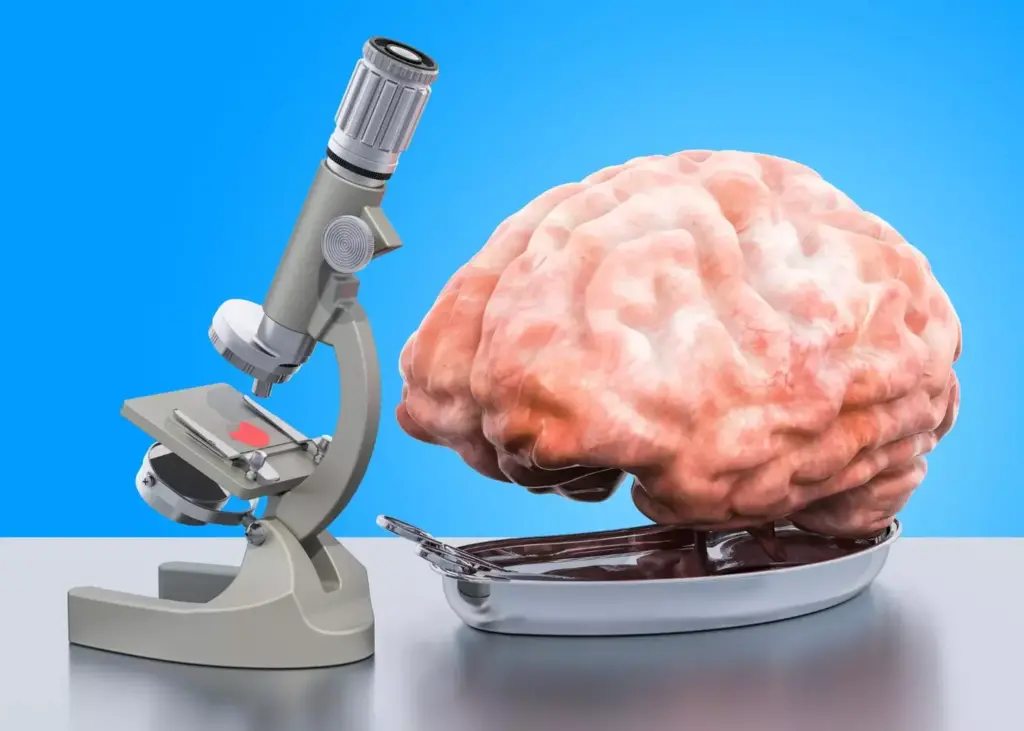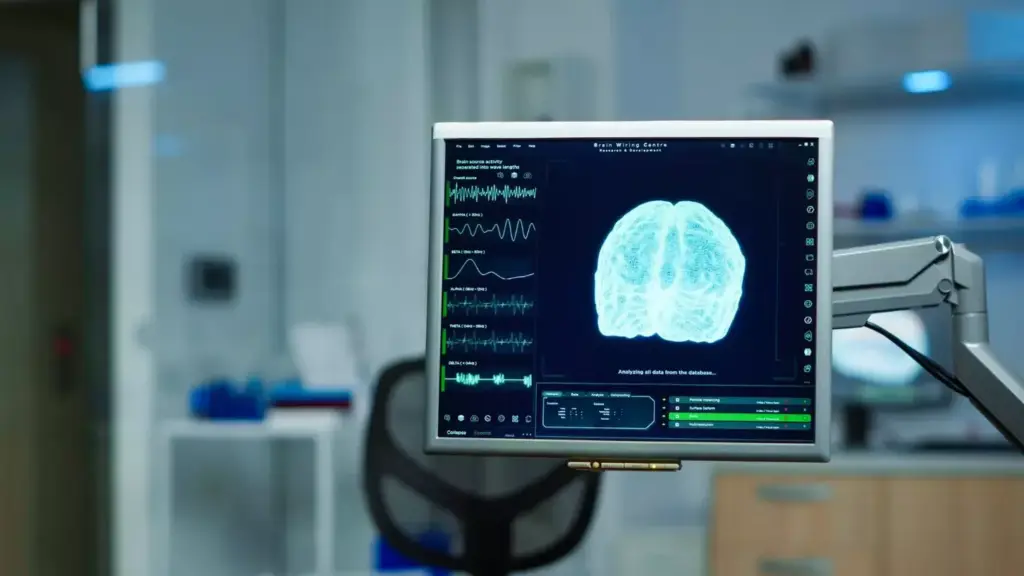Last Updated on November 26, 2025 by Bilal Hasdemir

Recent breakthroughs in medical research have changed the way we treat brain cancer. At Liv Hospital, we offer top-notch healthcare for international patients. Our team works hard to provide advanced brain cancer treatment options that fit each patient’s needs.
We’re seeing big steps forward in brain tumor management. New drugs and methods are being created to help patients more. Our hospital leads in these advancements, giving patients a wide range of brain cancer treatment options.
Key Takeaways
- Advanced treatment options are available for brain cancer patients.
- Liv Hospital is committed to providing world-class healthcare.
- Novel drugs and approaches are being developed for brain tumor management.
- Personalized care is available for international patients.
- Significant advancements are being made in brain cancer treatment.
Understanding Brain Cancer and Its Curability
Brain cancer, or brain tumors, can be benign or malignant. The latter is harder to treat. The chance of curing brain cancer depends on the tumor type, location, and when it’s found.
Types of Brain Tumors and Their Prognosis
Brain tumors are divided into types based on their origin and behavior. Gliomas, meningiomas, and medulloblastomas are common ones. The outlook varies among these types.
Glioblastoma, a very aggressive glioma, has a worse prognosis than meningiomas, which are usually benign.
| Tumor Type | Malignancy Level | Typical Prognosis |
|---|---|---|
| Glioblastoma | High | Poor |
| Meningioma | Low/ Benign | Favorable |
| Medulloblastoma | High | Guarded |
Factors Affecting Treatment Success
Several factors impact brain cancer treatment success. These include the tumor type and grade, patient’s overall health, and the stage at diagnosis. Early detection and new treatments have boosted survival rates for some tumors.
The Reality of “Cure” vs. Management
The idea of a “cure” for brain cancer is complex. Some tumors can be cured if caught early, but others need ongoing care. The term “cure” means the tumor won’t come back, which isn’t always true.
So, treatment aims to cure the disease and manage symptoms to enhance life quality.
We know some brain tumors can be cured, but aggressive ones are tough. It’s important to understand the difference between a “cure” and management. This helps set realistic hopes and guide treatment plans.
The Complete Diagnostic Process
Understanding brain cancer starts with a detailed diagnostic process. This step is key to finding the right treatment for patients.
Diagnosing brain cancer uses advanced imaging, biopsies, and molecular tests. Advanced imaging techniques are vital for spotting tumors’ location, size, and type.
Advanced Imaging Techniques
Tools like MRI and CT scans are key for seeing brain tumors. They help doctors understand the tumor’s shape and how it affects the brain.
Biopsy and Molecular Testing
A biopsy takes a tumor sample for closer look. Molecular testing of this sample finds genetic markers that guide treatment.
Staging and Grading Brain Tumors
After diagnosis, doctors figure out the tumor’s stage and grade. Staging shows how far the tumor has spread. Grading tells how aggressive the tumor is.
Knowing the tumor’s stage and grade is essential for treatment. It helps doctors predict the outcome and pick the best brain cancer treatment.
The detailed diagnostic process is vital for managing brain cancer. It combines advanced imaging, biopsies, and molecular tests. This way, doctors can tailor treatments to meet each patient’s needs.
Surgical Interventions: The First Line of Treatment
The first step in treating brain cancer is often surgery. Surgeons try to remove as much of the tumor as they can. They do this while keeping the brain around it safe. New surgical methods have made treatment better for patients.
Craniotomy and Tumor Resection
Craniotomy is a common surgery for brain tumors. It involves taking part of the skull off to get to the tumor. Then, tumor resection is done to take out the tumor.
The goal is to get as much of the tumor out as possible. This is done without harming the brain too much.
Craniotomy and tumor resection are options for many with brain tumors. Whether or not to do surgery depends on the tumor’s size, location, and type.
Minimally Invasive Surgical Approaches
New, less invasive surgeries are changing how we treat brain tumors. These surgeries use smaller cuts and special tools. This means less damage to the brain and a quicker recovery. Endoscopic surgery is one of these, using a thin tube with a camera and light.
These surgeries are great for tumors in hard spots or for those at risk with big surgeries.
Awake Brain Surgery Techniques
Awake brain surgery, or awake craniotomy, is a complex method. The patient stays awake during part of the surgery. This lets surgeons check brain function as they work.
It’s very useful for tumors near important brain areas. It helps surgeons remove tumors carefully, avoiding damage to the brain.
By using the latest in surgery and careful planning, we can help brain cancer patients a lot. Every patient gets a treatment plan made just for them. This ensures the best chance for success.
Radiation Therapy Innovations
New advancements in radiation therapy are changing how we treat brain cancer. These changes make treatments more effective and less harmful. This is great news for patients all over the world.
Stereotactic Radiosurgery (SRS)
Stereotactic radiosurgery (SRS) is a precise way to treat brain tumors. It focuses radiation on the tumor, protecting healthy tissue. This method works well for small to medium-sized tumors.
SRS is non-invasive and can be done in one session. This makes it a good choice for many patients.
- High precision in targeting tumors
- Minimally invasive with fewer side effects
- Effective for small to medium-sized tumors
Proton Beam Therapy Advantages
Proton beam therapy uses protons to kill cancer cells. This method is great for tumors close to important areas. It lets doctors control the radiation dose more precisely.
This reduces harm to healthy tissues. It’s a valuable option for treatment.
- Precise control over radiation dose
- Reduced risk of damage to healthy tissues
- Effective for tumors near critical structures
Fractionated Radiation Approaches
Fractionated radiation therapy breaks treatment into many sessions. This lets healthy tissues recover between doses. This is good for bigger tumors or those in sensitive spots.
It can be adjusted for each patient. This improves treatment results.
The benefits of fractionated radiation include:
- Improved treatment outcomes for larger tumors
- Reduced side effects due to tissue recovery
- Customizable treatment plans
How to Cure Brain Cancer: Chemotherapy and Drug Therapies
Brain cancer treatment has made big strides, thanks to chemotherapy and drug therapies. These methods offer hope to patients. They provide various treatment options that fit each patient’s needs.
Standard Chemotherapy Protocols
Standard treatments for brain cancer use drugs that kill cancer cells or stop them from growing. Temozolomide is a key drug for treating glioblastoma. We give chemotherapy in cycles to let the body recover.
The right chemotherapy depends on the tumor type, grade, and the patient’s health. Combination therapies are also being tested to improve results.
| Chemotherapy Drug | Common Use | Administration Method |
|---|---|---|
| Temozolomide | Glioblastoma | Oral |
| Carmustine | Brain tumors | Intravenous |
Novel Drugs Including MT-125
Research on new drugs is ongoing, with MT-125 being a promising one. MT-125 targets specific pathways in brain cancer. We’re running clinical trials to check its safety and effectiveness.
“The development of novel drugs like MT-125 represents a significant step forward in the treatment of brain cancer, providing new options for patients.”
New drugs like MT-125 are being tested in trials, giving hope for better treatments. Targeted therapies aim to kill cancer cells while sparing healthy tissue.
Targeted Molecular Therapies
Targeted molecular therapies aim at specific molecules in cancer cells. Bevacizumab is a targeted therapy for certain brain cancers. It stops tumors from getting blood, which they need to grow.
We’re always looking for new targeted therapies to help brain cancer patients. These treatments are based on the tumor’s molecular makeup. This shows how important detailed diagnostic tests are.
Breakthrough Immunotherapy Approaches
Immunotherapy is a new way to fight brain cancer. It uses the body’s immune system to attack cancer cells. This method has shown great promise in treating different cancers, including brain tumors.
Checkpoint Inhibitors for Brain Tumors
Checkpoint inhibitors are a type of immunotherapy drug. They help the immune system fight cancer cells better. These drugs stop cancer cells from hiding from the immune system.
Some important checkpoint inhibitors for brain tumors include:
- PD-1 inhibitors, such as nivolumab and pembrolizumab
- CTLA-4 inhibitors, like ipilimumab
Studies are being done to see how well these treatments work for brain cancer patients. For more info on immunotherapy, check our dedicated page.
CAR T-Cell Therapy Applications
CAR T-cell therapy is a new and exciting immunotherapy. It changes a patient’s T-cells to find and kill cancer cells. This personalized treatment has worked well for some blood cancers and is being tested for brain tumors.
The steps are:
- Getting T-cells from the patient’s blood
- Changing them to make CARs that target cancer proteins
- Putting the modified T-cells back into the patient
Vaccine-Based Treatments
Vaccine-based treatments for brain cancer try to get the immune system to fight cancer cells. These vaccines can be made from the patient’s tumor cells or specific proteins found in brain cancer.
Benefits of these treatments include:
- They can help the immune system remember cancer cells for a long time
- They are less invasive and have fewer side effects than traditional treatments
- They can be used with other treatments to work better together
Even though these immunotherapy methods are promising, more research is needed. We need to understand their full benefits and limitations in treating brain cancer.
Advanced Delivery Systems and Focused Treatments
Advanced delivery systems are changing brain cancer treatment. They offer more precise and effective ways to treat the disease. These new methods help target tumors better while protecting healthy tissue.
Focused Ultrasound Technology
Focused ultrasound technology is a non-invasive treatment. It uses sound waves to target brain tumors. This method allows for precise treatment without surgery.
Benefits of Focused Ultrasound:
- Non-invasive procedure
- Precise targeting of tumors
- Minimal risk of complications
A recent study found focused ultrasound promising for brain tumors. It offers a non-invasive option compared to traditional surgery.
“The use of focused ultrasound in brain tumor treatment represents a significant advancement in the field of neuro-oncology.”
Convection-Enhanced Delivery
Convection-enhanced delivery (CED) involves directly infusing drugs into brain tumors. This method delivers higher drug concentrations to the tumor site. It improves treatment results.
| Treatment Modality | Description | Benefits |
|---|---|---|
| Convection-Enhanced Delivery | Direct infusion of therapeutic agents into the tumor | Higher drug concentrations, improved efficacy |
| Focused Ultrasound | Non-invasive ablation of tumor tissue | Non-invasive, precise targeting |
| Tumor Treating Fields (TTFields) | Electrical fields that disrupt tumor cell division | Non-invasive, minimal side effects |
Tumor Treating Fields (TTFields)
TTFields is a non-invasive treatment. It uses electrical fields to stop tumor cells from dividing. This method has shown promise in improving patient outcomes when combined with other treatments.
Key Advantages of TTFields:
- Non-invasive
- Minimal side effects
- Can be used in combination with other therapies
By using these advanced delivery systems and focused treatments, we are making brain cancer therapies more effective. This leads to better outcomes for patients.
Integrative and Supportive Care Approaches
Treating brain cancer is more than just fighting the tumor. It’s about caring for the whole person. As medical treatments improve, integrative and supportive care approaches are key to better patient outcomes and quality of life.
Nutritional Support During Treatment
Nutrition is vital in treating brain cancer. A balanced diet helps manage side effects, keeps strength up, and supports health. We suggest patients work with a dietitian to create a personalized nutrition plan.
Eating fruits, vegetables, whole grains, and lean proteins is good. Drinking plenty of water is also important, during treatments like chemotherapy and radiation. Avoiding spicy or high-fat foods can help too.
| Nutritional Element | Benefit | Food Sources |
|---|---|---|
| Protein | Maintains strength and supports healing | Lean meats, fish, eggs, beans, lentils |
| Fiber | Supports digestive health | Fruits, vegetables, whole grains |
| Antioxidants | Helps reduce oxidative stress | Berries, leafy greens, nuts, seeds |
Managing Treatment Side Effects
It’s important to manage brain cancer treatment side effects. These can include fatigue, nausea, cognitive changes, and emotional distress. We use various strategies to help, like medications, lifestyle changes, and supportive therapies.
For fatigue, we recommend pacing activities and gentle exercise like yoga or walking. Anti-nausea medications and dietary changes can help with nausea. Cognitive rehabilitation and counseling support emotional well-being.
Complementary Therapies
Complementary therapies can make treatment better for brain cancer patients. They help with symptoms and improve well-being. These therapies are used alongside, not instead of, conventional treatments.
Acupuncture can help with pain and nausea. Mindfulness and meditation reduce stress and improve mental clarity. Art therapy offers emotional relief and relaxation.
- Acupuncture
- Mindfulness and meditation
- Art therapy
- Yoga
- Massage therapy
By using these integrative and supportive care methods, we offer brain cancer patients a more complete and caring plan. This addresses their physical, emotional, and social needs.
Conclusion: The Future of Brain Cancer Treatment
We are seeing big steps forward in treating brain cancer. New research and treatments are making therapy more effective. The outlook for brain cancer treatment is bright, thanks to ongoing research and new treatments.
New treatments like immunotherapy and targeted molecular therapies are giving patients hope. Looking into natural remedies and alternative therapies can also help. But, it’s important to talk to doctors before trying these options.
Preventing and catching brain cancer early is key. Knowing how to prevent it and staying up-to-date with research helps patients and their families. This knowledge empowers them to make better choices for their care.
As we go forward, we’ll see even better treatments. These will improve life for those with brain cancer. Our dedication to top-notch healthcare and support for patients worldwide remains strong.
FAQ
What are the most common types of brain tumors?
Common brain tumors include gliomas, meningiomas, and acoustic neuromas. Gliomas are divided into astrocytomas, oligodendrogliomas, and ependymomas. Each type has its own treatment plan.
Can brain cancer be cured?
Brain cancer’s curability varies. It depends on the tumor’s type, stage, and location, and the patient’s health. Some can be cured, while others need ongoing care to manage symptoms.
What is the diagnostic process for brain cancer?
Diagnosing brain cancer starts with MRI and CT scans. Then, a biopsy and molecular tests are done. These steps help determine the tumor’s type and stage, guiding treatment.
What are the treatment options for brain cancer?
Treatments include surgery, radiation, chemotherapy, and immunotherapy. The best option depends on the tumor and the patient’s health.
How does immunotherapy work for brain cancer?
Immunotherapy uses the immune system to fight cancer. It includes checkpoint inhibitors and CAR T-cell therapy. These methods help the immune system attack cancer cells.
What is the role of nutritional support in brain cancer treatment?
Nutritional support is key in treating brain cancer. It helps patients stay strong and manage side effects. A balanced diet is essential.
Can complementary therapies help manage brain cancer treatment side effects?
Yes, therapies like acupuncture and meditation can help with side effects. They improve quality of life when used with traditional treatments.
What are the latest advancements in radiation therapy for brain cancer?
New radiation therapies include Stereotactic Radiosurgery (SRS) and proton beam therapy. These aim for precise treatment with less damage to healthy tissue.
How do advanced delivery systems improve brain cancer treatment?
Systems like focused ultrasound and TTFields target tumors more precisely. They make treatments more effective and reduce side effects.
What is the future of brain cancer treatment?
Brain cancer treatment is getting better. Research focuses on immunotherapy, targeted therapies, and advanced delivery systems. These advancements promise better outcomes and survival rates.








